By Nick Kurczewski | Photos by John Lamm
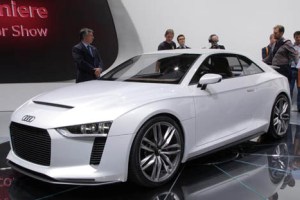
Audi Quattro Concept
Choosing favorites is a highly personal (and often best avoided) undertaking—just ask any parent with more than one child. But there are certain cars that stand out amongst the crowds here at the Porte de Versailles exhibition center. Dramatic styling and high-tech engineering both play a role in our top picks for concept cars we’d most like to see come to market.
In no particular order, here are our favorite concept cars from the Paris Auto Show:
Audi Quattro Concept
Audi reinvented the art of rally driving when the all-wheel-drive Quattro racing car arrived in 1980. Incredibly fast, but with the stability that comes from having four driven wheels, the Quattro was a star of the racing world that spawned, in 1984, the equally legendary road-going Sport Quattro. The only strange thing about the Audi Quattro Concept shown in Paris is why it took the German automaker so long to revive the famous model.An Audi spokesperson explained that the Quattro Concept’s chassis originally began as the platform for an RS 5 coupe. However, the steel structure was replaced with lightweight aluminum, and the wheelbase shortened by 5.9 in. The chunky-looking, 2-passenger Quattro Concept is powered by a longitudinally mounted 400-horsepower 2.5-liter 5-cylinder (borrowed from the Audi TT RS).
If the Quattro makes it to production—which seems highly likely—expect it to fit between the range-topping TT and base versions of the mid-engine R8.
Jaguar C-X75

Jaguar C-X75
Even better, this kitty is more than a pretty face. An electric powertrain is amped up (pun intended) by two gas micro-turbines. Hold on there George Jetson, because the spec sheet only gets better the more you read. The C-X75 has four electric motors—one in each wheel—that deliver the equivalent of 780 bhp and more than 1100 pound-feet of torque.
According to Jaguar’s estimates, the car accelerates from 0 to 62 mph in 3.4 seconds. A 68-mile electric range is boosted by the twin micro-turbines, for a total cruising range of 560 miles. Jaguar officials told us all this tech wizardry is slated for life in a laboratory, at least for several more years of testing.
Lamborghini Sesto Elemento

Lamborghini Sesto Elemento
Rather than being layered, like traditional carbon fiber, chopped fiber is put into a stamp and (according to Lamborghini officials) the finished chassis tub is complete in only eight minutes. The entire car weighs 2200 lb. It even has carbon-fiber wheels.
A V-10 engine and permanent all-wheel-drive are borrowed from the Gallardo. In terms of overall proportions, the Sesto Elemento has more in common with the “baby Lambo” than the company’s larger, range-topping Murciélago. Lamborghini did coyly tell us it would consider building the Sesto Elemento—strictly a concept car at this writing—so long as the potential owner had deep enough pockets to foot the bill.
Lotus Elite
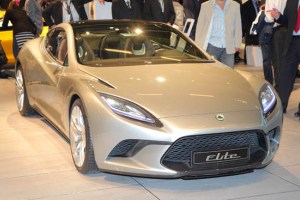
Lotus Elite
When the strangest press conference of the day finally ended, the cars (thankfully) spoke for themselves. While it would be easy to give top marks to the Lotus Esprit Concept, we’ll go out on a limb and give the nod to the Elite. Hey, let’s face it, you expect the 2-passenger Esprit to look like a million bucks…and it does. Job well done, Lotus.
But grafting sporty lines onto a notoriously awkward 2+2 passenger layout is always difficult. Lotus balanced the extra seating and streamlined styling beautifully. The front-engine, rear-drive Elite is powered by a 620-bhp 5.0-liter V-8. An optional KERS hybrid system should also be available when the car goes on sale in 2013.
BMW 6 Series Concept
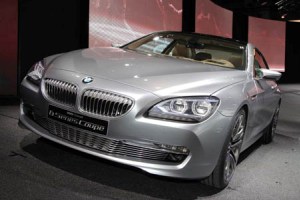
BMW 6 Series Concept
The rear end of the 6 Series is particularly more refined (i.e., less lumpy) than the previous model. A more aggressive front end and sharp side creases add extra attitude. It might not be a concept in the strict sense of the term, though we can’t argue that the next 6 Series is going to be a looker.
Engine choices will include BMW’s 300-bhp single-turbo inline-6 and twin-turbocharged V-8. A highly tuned version of the turbo V-8 should find its way under the hood of the next M6. Look for the 6 Series to arrive in the U.S. next year, and looking exactly like this concept version.
Kia Pop
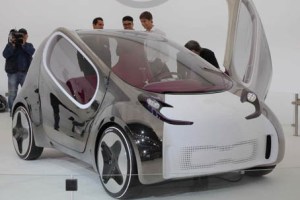
Kia Pop
Whereas the upcoming Nissan Leaf EV was kept almost painfully bland—so as not to alienate everyone but the hippest of tech-loving early-adopters—the Kia Pop is anything but a shrinking violet, despite its tiny size. Yes, the chrome finish of this concept would make keeping it clean a nightmare. Yet we couldn’t help but smile at those wacky-looking side windows and doors that swing up and out.
The purple interior takes some serious getting used to. So would an estimated top speed of only 87 mph and a driving range of 100 miles. The Kia Pop EV is far from perfect and definitely risky. But isn’t that what concept cars should be all about?
Audi eTron Spyder Concept
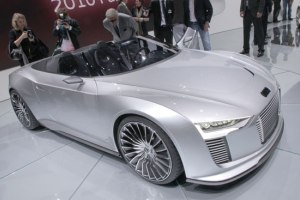
Audi eTron Spyder Concept
Renault DeZir Concept

Renault DeZir Concept
Exagon Furtive-eGT
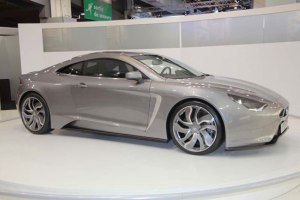
Exagon Furtive-eGT
Wow bro, that's crazy. Cars look so much different than what they used to look like. They look like mega future cars. Keep up the good Blogs! Thanks.
ReplyDelete